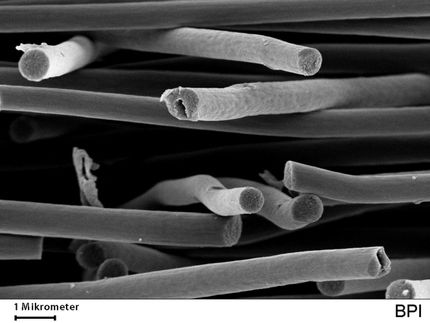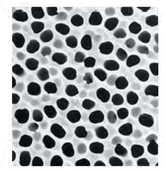Using Nanotechnology to Create High-performance Materials
Advertisement
The GKSS Research Centre in Geesthacht is coordinating a European project for the development of new plastics. The project is being coordinated from Geesthacht by the director of the Institute of Polymer Research, Prof. Volker Abetz. "One of the aims of our first meeting will be to discuss the current state of materials development and the steps that need to be taken, especially with regard to the materials' subsequent applications," says Abetz. Because the new composites do not build up an electrostatic charge and are electrical conductors, they could be used for petrol fuel lines in automobiles, for example, as well as for special packaging materials and membranes.
The HARCANA project is run by a consortium of 11 partners, including the renowned University of Liège in Belgium, the French engineering school ESPCI (École supérieure de physique et de chimie industrielles de la ville de Paris), the CSIC (Consejo Superior de Investigaciones Científicas, Spain's largest public research institute) and the industrial partners Deutsche Borsig GmbH and GMT Membranetechnik GmbH (GMT).
The HARCANA project is organized into 11 work packages, including one headed by GKSS researcher Dr. Adriana Boschetti-de-Fierro. The scientist is investigating materials such as carbon nanotubes, which generally have walls only a few carbon atoms thick. Carbon nanotubes are a recent development with unique properties, one of the most notable being the new material's conductivity. In addition, carbon nanotubes help to increase the strength, rigidity and break resistance of plastic.
Although carbon nanotubes are 20 times stronger than steel, they are as light as aluminium. Boschetti-de-Fierro points out, however, that despite the current euphoria, "composites with carbon nanotubes are still under development. One of the issues we are currently looking into is how to distribute these nanofibres evenly in the plastic at the molecular level." This is difficult because nanotubes tend to stick to one another and clump together. At present, this clumping makes the new material rapidly lose its special properties.
Topics
Organizations
Other news from the department science
These products might interest you

Get the chemical industry in your inbox
By submitting this form you agree that LUMITOS AG will send you the newsletter(s) selected above by email. Your data will not be passed on to third parties. Your data will be stored and processed in accordance with our data protection regulations. LUMITOS may contact you by email for the purpose of advertising or market and opinion surveys. You can revoke your consent at any time without giving reasons to LUMITOS AG, Ernst-Augustin-Str. 2, 12489 Berlin, Germany or by e-mail at revoke@lumitos.com with effect for the future. In addition, each email contains a link to unsubscribe from the corresponding newsletter.


























































